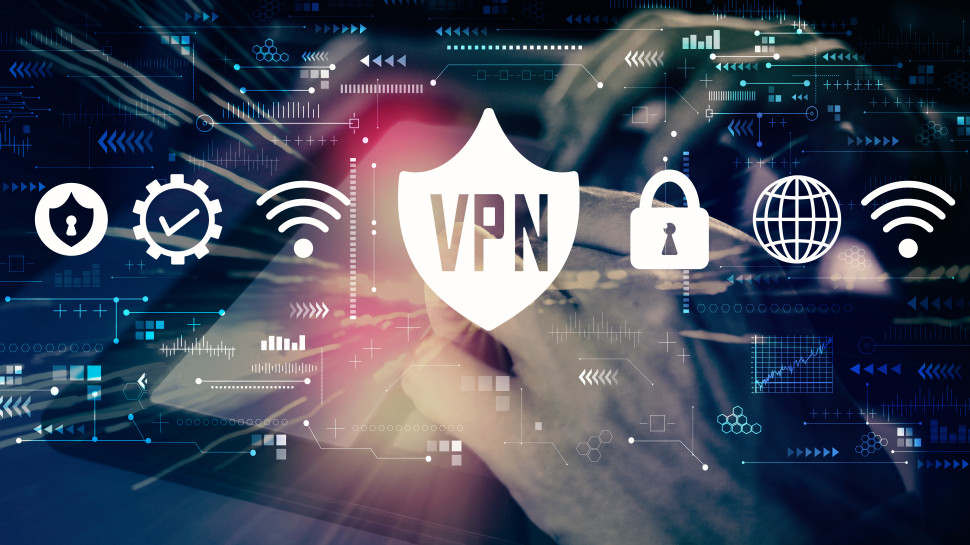To VPN or Not to VPN?
Remote work is here to stay, and VPN is no longer sufficient to provide a secure way for people to work remotely. A new approach leveraging digital workspace solutions is needed.

It’s a question many organisations are asking as they work to provide secure and reliable remote access at scale
Technologies that enable employees to work from home have been around for decades. Many companies had been using them to enable a small portion of their employees to work remote on occasion. But in response to the Covid-19 pandemic, most have been forced to shift the majority of their employees to working from home.
Many thought it would be a temporary situation. But the fact is, remote work will likely be the new normal, even after employees can safely return to their offices.
This shift gives businesses an opportunity to redefine themselves and enable flexible models that provide a superior employee experience that improves engagement and productivity, without compromising security or performance. But it has also opened a whole new set of security concerns that must be addressed, including an expanded attack surface and an increase in global phishing and denial-of-service attacks, hacking attempts and data theft. Now more than ever, zero trust is critical. And to ensure it will require a new approach to remote app and data access.
A new approach
When remote work moved from something a few people did to a mandate for nearly all employees, companies around the world scrambled to scale up their resources and enable it. Many responded tactically and reached for Virtual Private Network (VPN) technologies, as they have long been the traditional way to access corporate applications and data outside corporate locations. But a VPN approach is not a panacea for widespread remote work in the short or long term. Here’s why:
A risky proposition
As anyone in the IT security space knows, the larger the attack surface, the higher the risk of compromise. And with more workers accessing corporate systems and data from home – in many cases on unsecured personal devices - the surface has never been greater. Nor have the security concerns associated with VPNs, including:
- Wide access: A VPN tunnel into a data centre enables a remote user access to the entire corporate network, even though an end-user may only require access to small subset of applications based on their role and job function. Opening up access to the entire corporate network not only increases the threat surface, but also significantly increases the probability of an attack.
- One-time checks: A traditional VPN only checks for user-authentication at the time of login. A hacker with stolen credentials could access all the network and apps. There is no further check or monitoring in place to ensure a user is the same person they claim to be throughout the session.
- Lack of context: VPN solutions don’t account for change in context such as user or device to define and enforce contextual policies. If a device is jailbroken or stolen and gets into wrong hands, all bets are off.
- Endpoint Protection: If endpoint protection software isn’t installed and kept updated on devices and they become infected, they can contaminate company networks and data and potentially result in theft and corruption.
- Clipboard and Peripheral Blocking: If clipboard and peripheral blocking aren’t enforced, users can easily copy and paste data into the local device when a VPN tunnel is established.
- Traffic Back-Hauling: For applications accessed via the web or as SaaS, having an appliance for VPN at the data centre means backhauling all end-user traffic to a data centre, which can negatively impact performance and the end-user experience. In fact, a recent survey of more than 2,000 US employees who work from home found that VPN-based remote work approaches resulted in “slow performance” and “lack of access to all the apps needed to get work done.”
What’s good for the goose is not good for the gander
VPN may work for a small subset of users. But there are challenges in scaling it to accommodate larger groups. There’s a high interdependency on performance when multiple users are connected simultaneously to the same network equipment (it results in bandwidth and resource contention of the hardware delivering remote access, all the way to the infrastructure hosting the company resources). If five per cent of users download large files over the VPN tunnel, they will have a negative impact on the other 95 per cent of users.
Managing complexity
In addition, a traditional VPN solution is not only complex to set up, but time consuming to administer and manage. Adding licenses and scaling up a VPN Concentrator can be quickly and easily done. But there are significant costs associated with enabling VPN broadly, considering the layers of solutions (MDM, Endpoint Protection, HDD encryption, network resizing, and more) required to ensure sure security isn’t compromised when it’s rolled out.
An alternative approach
So what’s an IT administrator to do? Consider digital workspace solutions. With digital workspace solutions, you can provide users with access to all of the apps and information they need to do their jobs, including enterprise web-apps, SaaS, and virtual and mobile apps, anywhere, anytime on any device and:
- So what’s an IT administrator to do? Consider digital workspace solutions. With digital workspace solutions, you can provide users with access to all of the apps and information they need to do their jobs, including enterprise web-apps, SaaS, and virtual and mobile apps, anywhere, anytime on any device and:
- Provide access that isn’t just network-based, but governed through contextual information that is end-user and device-based
- Continuously monitor end-user activities and assess user behaviour and patterns, in addition to performing authentication checks
And when used alongside application delivery control tools, you can deliver a more reliable experience than you can using VPN as such tools:
- Use significantly less bandwidth
- Auto-adjust to changes in network conditions
- Provide continuous feedback to the end user when network conditions deteriorate
- Report to IT on client network conditions that have an impact on performance so they can take action
There is a silver lining in every cloud. Companies that embrace digital workspace solutions to fuel remote work can overcome the security and reliability issues inherent in VPN and deliver a high-performance experience that keeps employees engaged and productive, while gaining new levels of agility that accommodate their business today and position them to thrive in the future.
9 fantastic Corel products, worth nearly $4,000
Say hello to endlessly creative, seriously productive professional graphic design - on Windows, Mac and web with this astonishing package from one of the most respected creative software publishers out there, Corel. The package includes: CorelDRAW Graphics Suite 2020 + 1-year subscription to CorelDRAW.app Pro, CorelCAD 2020, CorelDRAW Technical Suite 2019, WordPerfect Office Professional 2020, Painter 2020, Pinnacle Studio 23 Ultimate, MindManager 2020 for Windows and MindManager for Mac 13
- Also check out our list for the best VPN
Sign up to the TechRadar Pro newsletter to get all the top news, opinion, features and guidance your business needs to succeed!
Adi Trivedi is a Principal Sales Engineer with Citrix, a leading provider of digital workspace solutions.
